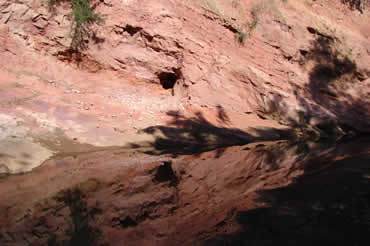Geology and Paleoenvironment
The Rukwa Rift Basin preserves one of the only well-exposed, fossiliferous Cretaceous-Neogene continental sedimentary successions in sub-equatorial Africa. Prior to our work, the significance of the basin for paleontological, paleoenvironmental, paleoclimatic and tectonic reconstructions of African ecosystems during these critical time periods was not recognized.The Rukwa Rift Basin contains a deep sedimentary record, beginning with Carboniferous to Permian-age Karoo Supergroup deposits at the base, topped by the fossiliferous Red Sandstone Group, and finally the overlying Lake Beds megasequence. Detailed geological investigations conducted annually since 2002 have produced a wealth of new data on Rukwa Rift Basin local stratigraphy, lithofacies, alluvial architecture, sedimentary provenance, paleocurrents, clay mineralogy and geochronology. Importantly, this work has revealed important insights into the long-lived tectonic history of the region and the development of the East African Rift System. Our refined stratigraphic work has confirmed the presence of an extensive middle Cretaceous sequence (Galula Formation), has revealed a previously unrecognized late Paleogene continental sequence (Nsungwe Formation), and has begun to unravel the complex depositional history of the uppermost Neogene-Recent deposits in the rift (Lake Beds sequence).
The Galula Formation represents a 600-3000 m thick sequence of amalgamated, fluvial channel deposits that were deposited across a large braidplain system via multiple parallel channels originating in the highlands of Malawi and Zambia. Lithofacies and clay mineralogy indicate that paleoclimate ameliorated during deposition of the Galula Formation, transitioning from tropical semi-arid to tropical humid conditions.
The 400+ m-thick Nsungwe Formation is temporally constrained by high-precision radiometrically dated volcanic tuffs. A significant change in depositional environments occurs between the lower alluvial fan-dominated Utengule Member and the upper fluvial and lacustrine-dominated Songwe Member. The Songwe Member preserves a diverse fauna that was deposited in a semi-arid wetland landscape during the late Oligocene (+/- 24.96 Ma). The Nsungwe Formation provides a new window into the early tectonics and faunal transitions associated with initiation of the “modern” East African Rift System.
The Lake Beds Megasequence represents a poorly constrained, and little understood, package (up to 4000 m thick) of Late Neogene to Recent volcanic-rich fluvial, alluvial and lacustrine deposits that together comprise the final depositional phase in the rift. Re-examination of seismic data sets and two deep exploration wells, coupled with examination of extensive surface exposures is underway. In combination with paleontological investigations, geologic investigations involving detailed sedimentology, stable isotopes, radioisotopic dating, detrital zircon geochronology, and low-temperature thermochronology are helping to clarify the complexities associated with this portion of the stratigraphy in the Rukwa Rift Basin.
For more information on the RRBP geology, see Roberts et al., 2010 and 2012.

